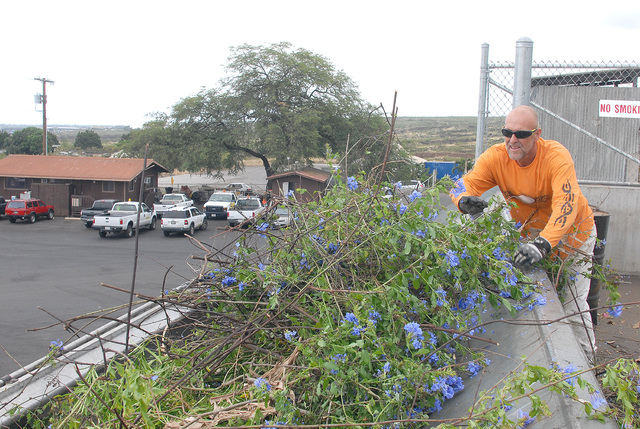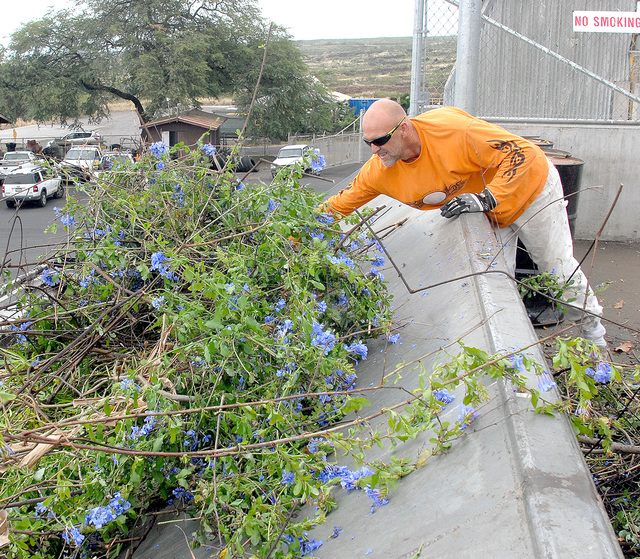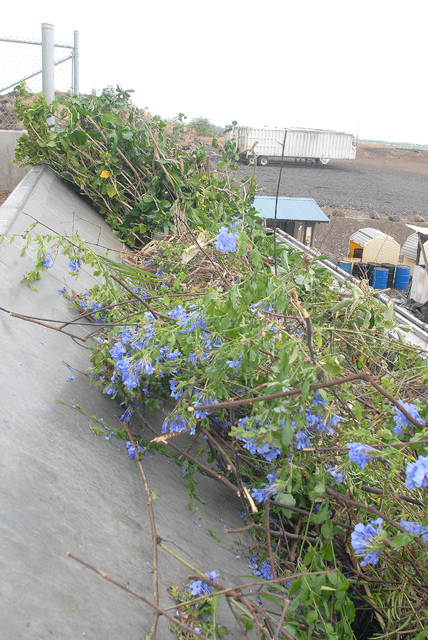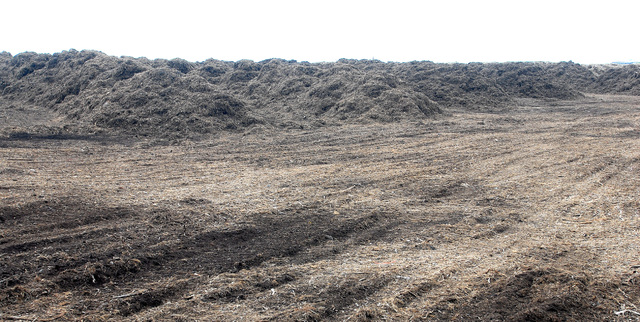HILO — Hawaii County is poised to become the first county in the state to have a full-scale composting facility capable of taking green waste, food-contaminated paper and restaurant waste and turning it into salable compost for the public.
The County Council paved the way Wednesday for the new organics processing facility by unanimously approving a $10.6 million bond to pay for it.
“This is probably one of the most important projects we’ll see our county embarking on,” said North Kona Councilwoman Karen Eoff, who sponsored two bills to pay for the project and add it to the county’s list of capital projects.
Bill 196 and 197 face one more council vote before being finalized.
The council a year ago had agreed to allow the Department of Environmental Management to enter into one or more 10-year contracts to implement green waste collection sites in either East Hawaii or West Hawaii or both.
Under the newly executed contract, a compost facility will be located at the Hilo landfill, with a receiving and mixing facility at the West Hawaii landfill. The waste will be trucked from the West Hawaii site to the Hilo landfill to be processed.
Compost will be available for sale countywide, said Solid Waste Division Chief Greg Goodale. The price of the compost to residents would be set by the contractor, which factors the compost price into the price it charges the county to process the waste.
The mulch would remain free for residents.
The county last week issued a notice to proceed to the winning contractor, Hawaiian Earth Recycling, a subsidiary of the county’s current mulch contractor, Hawaiian Earth Products.
“I know at first blush it looks like a huge amount, but I know it will be money well spent,” said Hilo Councilman Aaron Chung.
The first step in the process will be the creation of windrows, basically rows of mulch and organic waste that will be spread out in rows and allowed to reach a temperature exceeding 130 degrees Fahrenheit. That temperature is high enough to kill coqui frogs, little fire ants, coffee berry borers and ohia wilt, said Environmental Management Director Bobby Jean Leithead Todd.
“We’re very happy we are starting down a road that will take care of the invasives,” she said.
That step should begin in July and be producing the pest-free “enhanced” mulch by the fall.
The full composting facility is scheduled to be complete in 2018. Applying compost to the soil starts a biological process that decomposes organic matter and builds soil.
The new process will increase the amount of waste diverted from landfills by about a third. The current green waste diversion program merely grinds the waste and untreated wood pallets into mulch, which is free to the public.
The county also announced green waste bins are now available at the Volcano and Waimea transfer stations.
The composting project will be aided by changes to a bill banning polystyrene foam food containers that is currently being considered by the County Council. That bill, if passed, will not only ban the polystyrene, known as “Styrofoam,” but will also require the banned food containers be substituted only with compostable or recyclable food containers.













